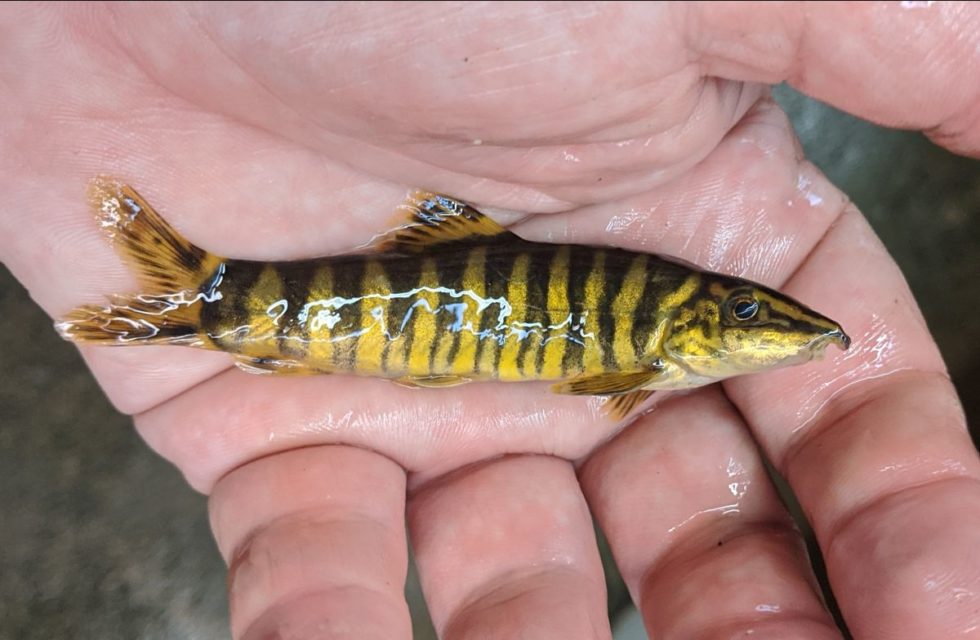
The Golden Zebra Loach is an omnivorous species. They usually range between 4 and 5 inches fully grown. When bought from a pet store, these fish will be between 2 and 3 inches. If the tank is at the higher end of the temperature range, it is important to maintain the high levels of dissolved oxygen in the water. They make a great addition to a freshwater aquarium with the proper care.

They like to hang out in shady areas over a rocky, sandy riverbed with a lot of wood and leaves. In the wild, they live in slow-moving streams and rivers. Gold Zebra Loaches prefer to be kept in schools of 6 to 9 fish. They are hardy, adaptable, semi-aggressive fish. These fish like to hang out in the middle or lower levels of the aquarium. They can almost always be found swimming and foraging for food. The Gold Zebra Loach is an incredibly active fish. They have 5 broad black bars on their body with other black markings on their head and tail. They are small gold-colored fish with black stripes. Gold Zebra Loaches are commonly referred to by many other names: Burmese Loach, Golden Zebra Loach, Asian Loach, Silver Striped Loach, and Burmese Zebra Loach. This is a loach type that fishkeepers of various levels of experience, including beginners, can keep. The Gold Zebra Loach ( Botia histrionica) is a freshwater fish originally from Myanmar, India.

This fish can be mixed with other bottom-dwellers, like freshwater sharks, Garra, catfishes and even other loaches. In larger systems, a shoal of ten or twenty specimens can make for a mesmerizing sight.Ī carnivorous diet of sinking pellets and frozen worms and shrimp will keep the Golden Zebra Loach in good health. Too few can lead to issues of territoriality and dominance among rivals, so always err on the side of keeping more individuals. As with most loaches, a modestly sized group is recommended, numbering perhaps a half-dozen or more. This is of concern for those wishing to keep this species in captivity. Here it travels about in large shoals which feature a complex hierarchy. What little is known of this fish in the wild indicates it occupies well-oxygenated headwaters whose substrate consists of sand and gravel. But, whichever carnivorous analogy one prefers, this fish is a stunner all the same.īotia histrionica originates from across a large swath of Southeast Asia, from India to Myanmar, in association with the Ayeyarwaddy River and other nearby drainages. Additional spots can also develop between the original bars, creating a dense array that can appear more like a tiger than a zebra. But, upon reaching its adult dimensions of nearly 6 inches, these markings fracture into many smaller, thinner, more-convoluted lines and stripes. Juveniles (which are typically how one comes across this species in the aquarium trade) sport several thick black bars. What’s more, the appearance of this fish changes quite dramatically as it matures.
#Golden zebra loach care series
The base coloration of its body is golden in tone (albeit a bit dull compared to that of a Gold Barb), and adorning the sides of adults are a series of black stripes which do indeed give one the impression of a zebra.

Oftentimes, the common names of the species we keep in aquariums appear almost to have been chosen at random, but the Golden Zebra Loach is a fish that has been perfectly named.


 0 kommentar(er)
0 kommentar(er)
